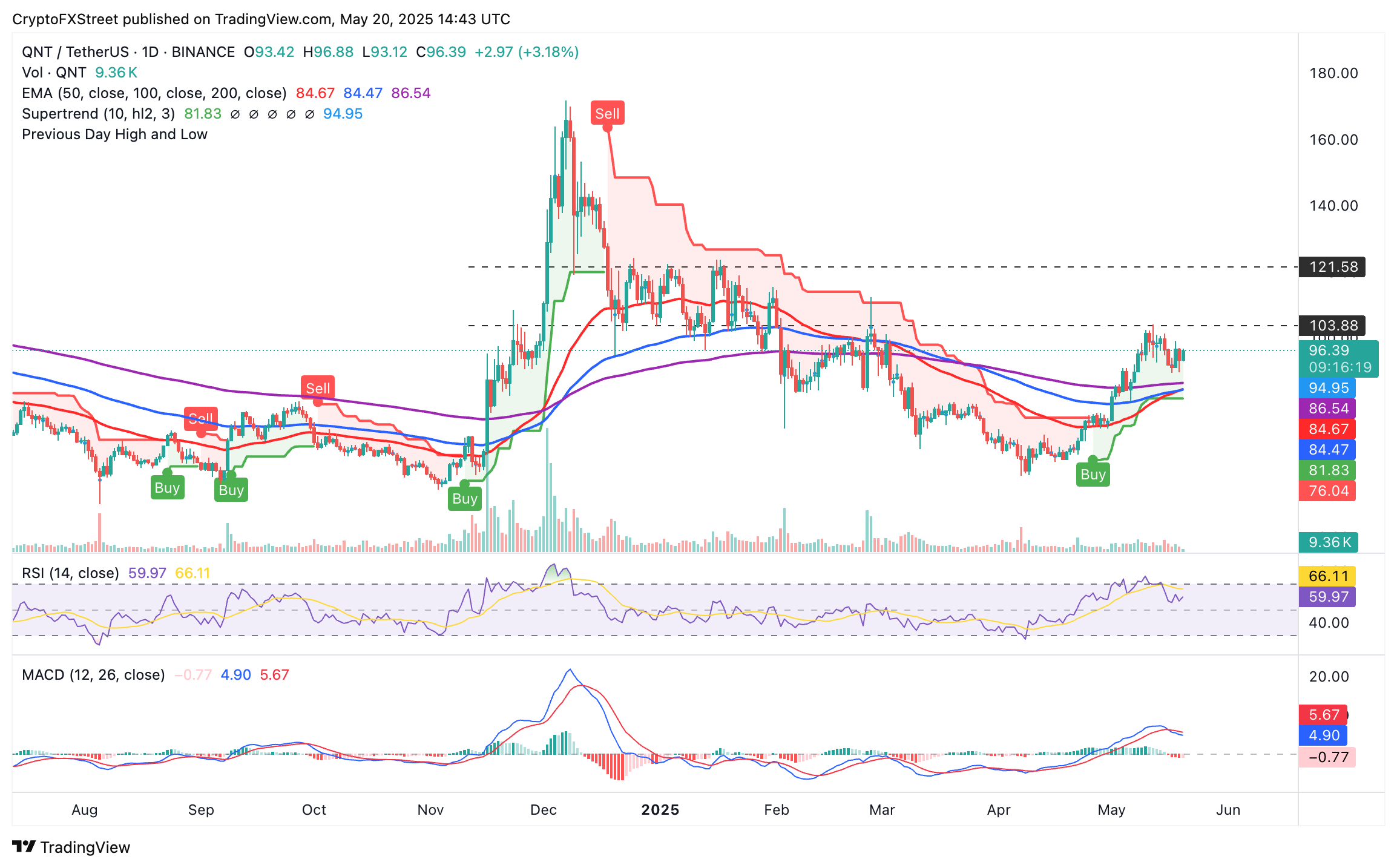Maker, Quant extend gains as Robinhood submits RWA proposal to the SEC
- Maker and Quant sustain 24-hour gains among other real-world assets coins amid renewed investor interest.
- Robinhood submits a 42-page proposal to the SEC to establish a regulatory framework for issuing and trading RWA tokens.
- If accepted, the proposal could usher in a new era of scalable and legal tokenized markets in the US.
Maker (MKR) and Quant (QNT) are holding onto their 24-hour gains on Tuesday, riding the wave of renewed investor interest in real-world asset (RWA) tokens. This surge comes amid a significant development in the crypto space, with Robinhood submitting a 42-page proposal to the United States (US) Securities and Exchange Commission (SEC) to establish a federal regulatory framework for issuing and trading RWA tokens.
Robinhood’s proposal could bring Wall Street on-chain
Robinhood’s proposal to the SEC seeks to create a unified framework that could replace the current fragmented, state-by-state compliance model used to govern securities in the US.
The 42-page proposal advocates for tokens representing assets such as equities or government bonds to be legally recognised as the equivalent to their respective underlying assets instead of categorising them as derivatives or synthetic products.
At the same time, the brokerage firm proposed support for off-chain matching with on-chain settlement, which would leverage blockchain technology and streamline key processes while reducing the traditional T+2 settlement cycle.
If approved, the proposal could mark the beginning of a scalable and legally solid foundation for tokenised markets in the US. With such a prominent move, the US could get closer to unlocking a $30 trillion market by 2030.
Experts view Robinhood’s move as a bold step toward bridging traditional finance and decentralized technology, potentially bringing Wall Street on-chain.
“This proposal could mark the first time a US-regulated broker has laid out a viable path for bringing trillions of dollars in assets on-chain, without compromising regulatory integrity,” crypto expert Mati Greenspan said.
Maker, Quant consolidating gains
The cryptocurrency market is broadly consolidating in a tight trading range, characterised by declining volumes and restrained speculative activity. However, select altcoins, especially those in the real-world assets (RWA) category, continue to hold onto gains accrued in the last 24 hours.
Maker, a key player in Decentralized Finance (DeFi) with its DAI stablecoin, hovers at around $1,717 after falling from a recent peak of $1,961 reached on May 14. The RWA token sits above key moving averages, including the 50-day Exponential Moving Average (EMA) at $1,561, the 200-day EMA at $1,510 and the 100-day EMA at $1,478.
The path with the least resistance has shifted downwards, with the Relative Strength Index (RSI) indicator falling to 54.62 from the overbought level of 73.
A sell signal confirmed by the Moving Average Convergence Divergence (MACD) indicator hints at increasing downside risks. This outlook manifests when the MACD line (blue) crosses below the signal line (red).

MKR/USDT daily chart
On the other hand, Quant’s interoperability solutions position it as a vital infrastructure provider for cross-chain RWA applications. Trading at around $96 at the time of writing, QNT shows signs of a strong tailwind and a high probability of closing day above the $100 mark.
After Quant’s recent rally topped out at $103, its down leg extended to $89 before reversing the trend upwards. QNT holds significantly above key moving averages, with the 200-day EMA at $86, while the 50-day and 100-day EMAs establish confluence support at $84.

QNT/USDT daily chart
The SuperTrend supports the uptrend with a buy signal sent when Quant’s price flipped above the indicator. This dynamic support and resistance validates QNT’s upside potential.
Cryptocurrency prices FAQs
Token launches influence demand and adoption among market participants. Listings on crypto exchanges deepen the liquidity for an asset and add new participants to an asset’s network. This is typically bullish for a digital asset.
A hack is an event in which an attacker captures a large volume of the asset from a DeFi bridge or hot wallet of an exchange or any other crypto platform via exploits, bugs or other methods. The exploiter then transfers these tokens out of the exchange platforms to ultimately sell or swap the assets for other cryptocurrencies or stablecoins. Such events often involve an en masse panic triggering a sell-off in the affected assets.
Macroeconomic events like the US Federal Reserve’s decision on interest rates influence crypto assets mainly through the direct impact they have on the US Dollar. An increase in interest rate typically negatively influences Bitcoin and altcoin prices, and vice versa. If the US Dollar index declines, risk assets and associated leverage for trading gets cheaper, in turn driving crypto prices higher.
Halvings are typically considered bullish events as they slash the block reward in half for miners, constricting the supply of the asset. At consistent demand if the supply reduces, the asset’s price climbs.



